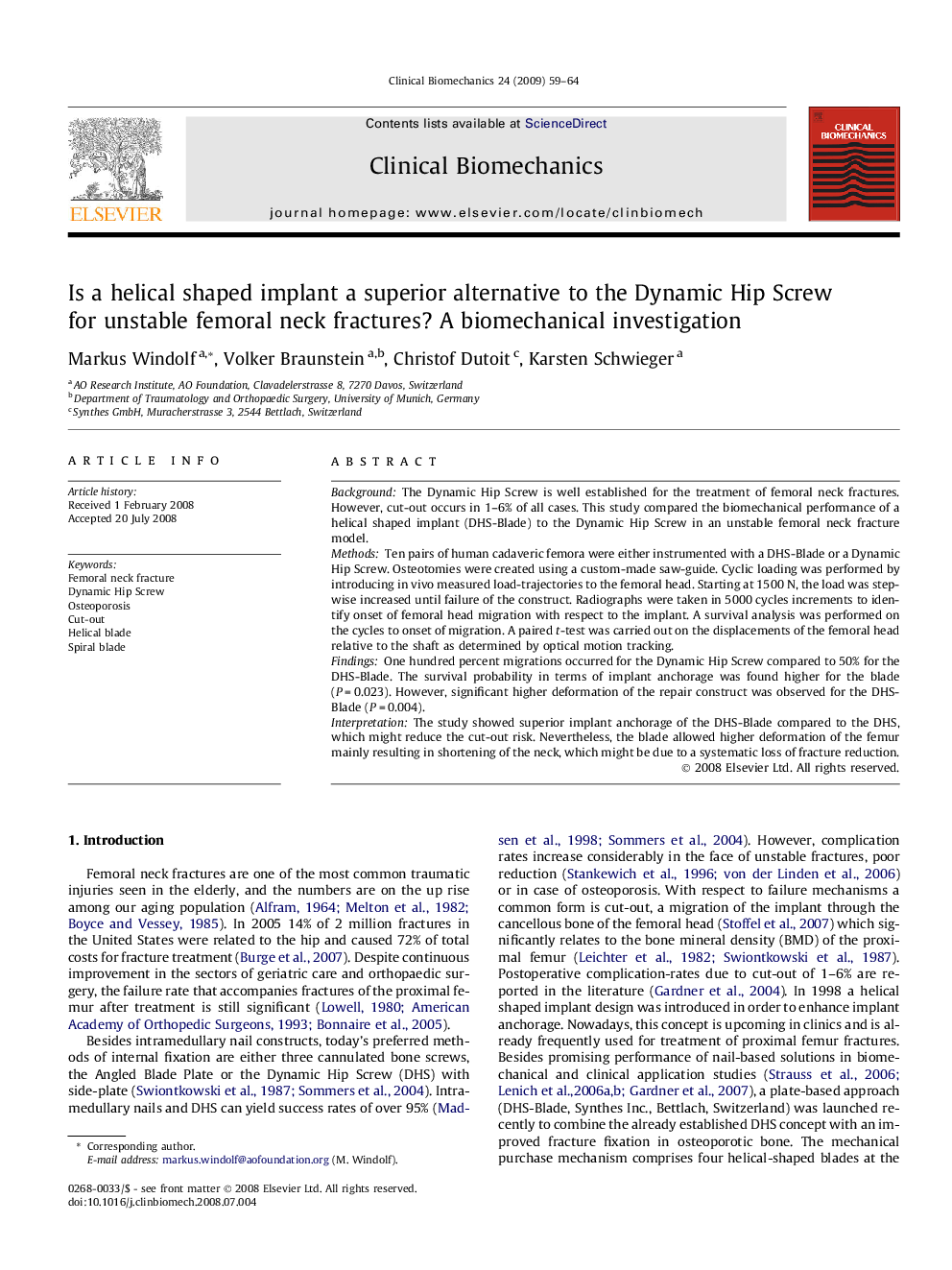| Article ID | Journal | Published Year | Pages | File Type |
|---|---|---|---|---|
| 4050845 | Clinical Biomechanics | 2009 | 6 Pages |
BackgroundThe Dynamic Hip Screw is well established for the treatment of femoral neck fractures. However, cut-out occurs in 1–6% of all cases. This study compared the biomechanical performance of a helical shaped implant (DHS-Blade) to the Dynamic Hip Screw in an unstable femoral neck fracture model.MethodsTen pairs of human cadaveric femora were either instrumented with a DHS-Blade or a Dynamic Hip Screw. Osteotomies were created using a custom-made saw-guide. Cyclic loading was performed by introducing in vivo measured load-trajectories to the femoral head. Starting at 1500 N, the load was stepwise increased until failure of the construct. Radiographs were taken in 5000 cycles increments to identify onset of femoral head migration with respect to the implant. A survival analysis was performed on the cycles to onset of migration. A paired t-test was carried out on the displacements of the femoral head relative to the shaft as determined by optical motion tracking.FindingsOne hundred percent migrations occurred for the Dynamic Hip Screw compared to 50% for the DHS-Blade. The survival probability in terms of implant anchorage was found higher for the blade (P = 0.023). However, significant higher deformation of the repair construct was observed for the DHS-Blade (P = 0.004).InterpretationThe study showed superior implant anchorage of the DHS-Blade compared to the DHS, which might reduce the cut-out risk. Nevertheless, the blade allowed higher deformation of the femur mainly resulting in shortening of the neck, which might be due to a systematic loss of fracture reduction.
